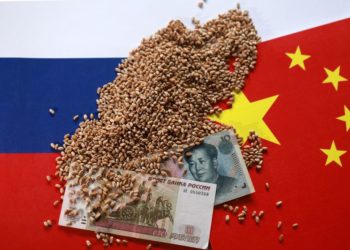Mohnish Pabrai, a prominent value investor who manages approximately $900 million in assets through his Pabrai Investment Funds, has identified a simple mathematical concept he believes should be fundamental education for every investor: the Rule of 72.
During a recent appearance on The Diary of a CEO, a popular business podcast hosted by British entrepreneur Steven Bartlett, Pabrai emphasized the importance of this financial principle. The Rule of 72 is a simple way to help you calculate how long it takes money to double at a given interest rate.
“It’s a kind of a mathematical hack,” Pabrai said during the interview. “The rule of 72 is a very important rule, and I wish they would teach it more in high schools and elementary school.”
The formula works by dividing 72 by the expected annual return percentage. For example, at a 7% return, money doubles in approximately 10 years (72 ÷ 7 = 10.3). At 10% returns, doubling occurs in roughly seven years, while 15% returns cut the doubling time to about five years.
“It’s very important to know how long money takes to double, because then we can start doing a lot of math in our heads,” Pabrai said.
This mental calculation ability allows investors to quickly assess the long-term potential of different investment opportunities without complex financial calculators.
To illustrate the power of compound interest, Pabrai shared a compelling historical example during the interview. In 1623, Native American Indians sold Manhattan to Dutch settlers for $23. Yes, you read that right.
“If the Indians had invested at 7% a year for the last 400 years, they would have more money than owning the land,” he explained. Using the Rule of 72, that $23 would have doubled every 10.3 years at 7% returns. Over 400 years, this would have resulted in approximately $23 trillion—significantly more than the value of Manhattan real estate today, which is estimated to be in the ballpark of $2.2 trillion.
The example becomes even more striking when scaled down: “If you gave them 2.3 cents, 100 years later, they’d have $23, and now it would be the 23 trillion,” Pabrai noted, adding “if the runway is long enough, the starting capital doesn’t matter.”
Beyond the mathematical concept, Pabrai offered practical advice for everyday investors during the interview. He emphasized three fundamental principles: “spend less than you earn,” start investing young to maximize the compounding runway, and focus on broad market indices rather than individual stock picking.
“You could open an account at Fidelity or Interactive Brokers or Robin Hood, any of these places,” he said. “You could just ask them to give to buy you the S&P 500 index, for example, and they will get you invested in that.”
Pabrai said if you start investing at age 18, an initial $5,000 investment with a 10% return would result in approximately $500,000 by age 68, thanks to the money doubling seven times over the 50-year period.
“You can start seeing that over a lifetime, you’re going to be having too much money,” he noted.
Pabrai’s advocacy for this simple mathematical tool demonstrates how foundational financial concepts, when properly understood and applied, can transform investment outcomes. His message is clear: The path to wealth isn’t through complex strategies or market timing, but through understanding the fundamental mathematics of compound growth and having the patience to let it work over time. Plus, the simplicity of the rule—valuable for quick mental calculations—helps investors appreciate why maintaining consistent returns matters more than chasing spectacular short-term gains.
Pabrai brings considerable credibility to his investment recommendations. Born in Mumbai in 1964, he moved to the United States to attend Clemson University before launching his entrepreneurial career. After founding and successfully selling his IT consulting company TransTech for $20 million in 2000, Pabrai transitioned into investing, launching his investment funds in 1999.
Pabrai has built an impressive track record over more than two decades. His funds achieved cumulative returns of 517% net to investors versus 43% for the S&P 500 from 2000 to 2013, representing outperformance of 474 percentage points. Since inception, his funds have delivered annualized returns of approximately 25%, though recent years have shown more mixed performance relative to benchmarks.
Pabrai’s investment philosophy closely mirrors that of Warren Buffett, whom he famously paid $650,100 to have lunch with in 2007 alongside fellow investor Guy Spier.
You can watch Pabrai’s full Diary of a CEO interview below:
For this story, Fortune used generative AI to help with an initial draft. An editor verified the accuracy of the information before publishing.
This story was originally featured on Fortune.com
The post ‘I wish they would teach it more in high school’ appeared first on Fortune.




